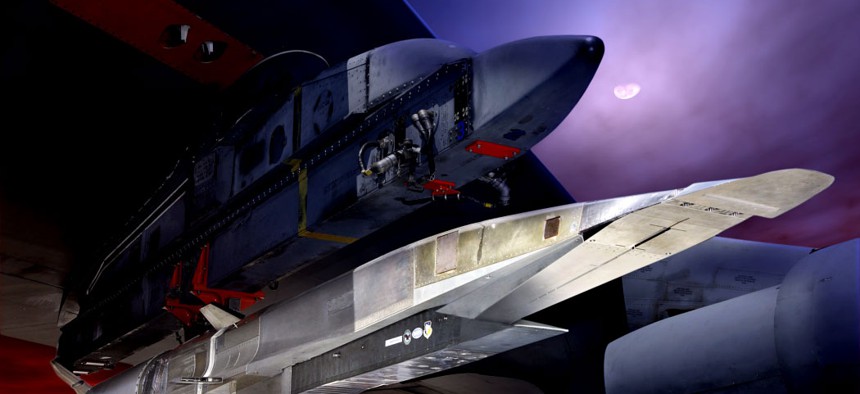DARPA wants to give hypersonic aircraft a reusable engine
The AFRE project looks to build a hybrid engine that can provide a smooth transition from supersonic to hypersonic (Mach 5) flight, which would allow the engines to be used again.
Military and space agencies have put hypersonic craft into the air for decades, but to get to the next step, researchers and manufacturers have to address two intertwined challenges: making the aircraft reusable and allowing for a smooth transition from one level of Mach speeds to the next.
The Defense Advanced Research Projects Agency is looking to tackle these challenges through its Advanced Full Range Engine (AFRE) program, which aims to build a new aircraft propulsion system that can handle the gamut of speeds involve in hypersonic flight.
As DARPA explains in a release, traditional jet engines top out at about Mach 2.5, which is a little less that 2,000 mph. Hypersonic engines, on the other hand, don’t provide proper thrust until Mach 3.5, just under 2,700 mph, leaving a gap that forces hypersonic engines to fire one-use-only rockets to propel the aircraft up to speed. (According to the Smithsonian’s How Things Fly website, speeds in the sound barrier-breaking range of 600 to 900 mph, or Mach 0.8 to 1.2, are transonic. Supersonic takes the baton from there until passing it to hypersonic at Mach 5, or 4,000 mph.)
DARPA’s goal is to get to Mach 5 with reusable aircraft by finding a way to seamlessly combine the two types of engines.
“Instead of designing an entirely new kind of engine, we’re envisioning an inventive hybrid system that would combine and improve upon the best of off-the-shelf turbine and ramjet/scramjet technologies,” said Christopher Clay, DARPA program manager. “This won’t be the first time that ambitious engineers will attempt to combine turbine and ramjet technologies. But with recent advances in manufacturing methods, modeling, and other disciplines, we believe this potentially groundbreaking achievement may finally be within reach.”
The military has been showing a renewed interest of late in hypersonic aircraft and weapons. Three years ago, for example, a project by DARPA, the Air Force, NASA and several companies produced the X-51A Waverider test vehicle, which hit Mach 5.1. Another DARPA/Air Force, the Tactical Boost Glide, seeks to develop hypersonic aircraft, while the Hypersonic Air-breathing Weapon Concept would work on demonstrating hypersonic weapons technology.
Hypersonic weapons and aircraft would greatly increase the reach of the military, with the ability to reach a target anywhere in the world in an hour.
Contractors also are working on the problem. Lockheed Martin’s Skunk Works, for example, announced the concept several years ago for its SR-72 spy plane, which the company said would reach Mach 6 and could replace the SR-71 Blackbird, which can travel at Mach 3.5. Earlier this year, the company said it could produce an F-22 size hypersonic demonstrator for less than $1 billion.
DARPA has scheduled a Proposers Day for AFRE July 13 and 14 at the agency’s conference center in Arlington, Va. a Broad Agency Announcement will follow. A Special Notice on the event is here.




